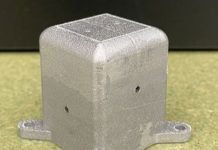
Parkinson’s disease (PD) is a progressive neurological condition affecting motor functions. Typical clinical signs of PD include slowness, absence, and reduced amplitude of movement.
One useful way to improve PD patients’ movement coordination is action observation-imitation training.
In this therapy, patients observe others’ body actions such as finger movement and then imitate the actions.
Now a group of Spanish researchers shows that virtual reality (VR) technique can be used in this motor training and help PD patients improve their motor functions. The study is recently published in Parkinsonism and Related Disorders.
A group of 16 PD patients took part in the study. They received 4 weeks of training of finger tapping via a VR system.
The VR-avatar did the finger movement at three different rates, and PD patients imitated the avatar’s movement as close as possible with their dominant hand (e.g., right hand if the person is right-handed).
Patients got 3 sessions per week, and each session is about 30 minutes. Their symptoms were tested before and after the training period. They also finished a finger-tapping test in a real environment and VR.
Researchers found that PD patients showed larger movement amplitude after therapy. Remarkably, the effect was found in both the trained hand and un-untrained hand.
In addition, PD patients could do finger-tapping better in both VR and real environment. This shows a transfer of trained skills to the real world.
Researchers suggest that VR is ecologically valid for training, and that motor imitation is useful as a treatment for reduced movement amplitude. Future research will confirm this finding in a larger sample of participants.
Copyright © 2018 Knowridge Science Report. All rights reserved.



